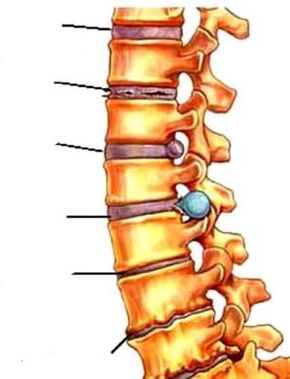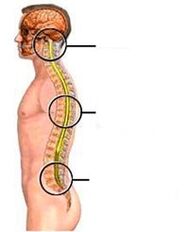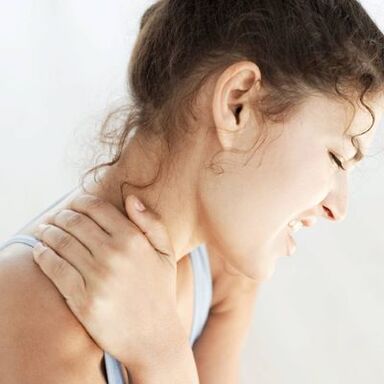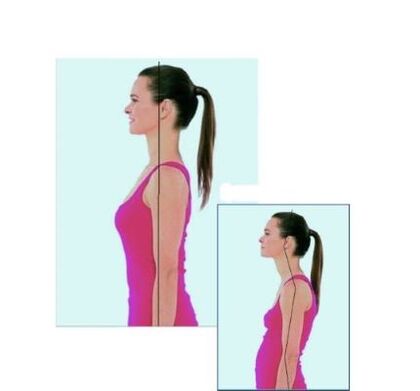Osteochondrosis is a term used to describe a group of diseases associated with degenerative and dystrophic changes in the structure of the spine. First of all, the intervertebral discs suffer and the vertebrae themselves with the development of the disease. Degenerative tissue erosion, aging, loss of original properties, and dystrophic - changes associated with changes caused by tissue malnutrition. Thus, the term osteochondrosis includes many spinal pathologies of a non-inflammatory layer.

The spine forms the spinal part of the skeleton by connecting different parts of the skeletal system. Supports the head, ribs and muscles are attached to it. The spinal cord passes through the spinal column, the brain is connected to different parts of the body. Man is the only two-legged creature in the world, and the spine is designed to provide two-legged movement. Therefore, the spine has a curved shape reminiscent of the letter S of the Latin alphabet and is not a rigid rod, but a complex structure consisting of interconnected elements - vertebrae. This structure of the spine allows us to perform various movements, to be agile, and to absorb shock and shock. The function of the shock absorbers is performed by the cartilaginous layers of the intervertebral discs - the nucleus pulposus and the ring fibrosis surrounding it. The nucleus carries the load and absorbs it, and the ring fibrosis prevents the nucleus from flattening under pressure.
A decrease in the elasticity of the intervertebral discs can be the beginning of a wider problem. Unable to withstand the load, the intervertebral discs begin to deform, the spine loses its proper shape. The development of the disease leads to further destruction of the intervertebral discs, the fibrous ring is broken, the vertebrae are in close contact with each other, it is possible to squeeze the nerves that connect the spinal cord with different parts of the body. Osteochondrosis develops like this. Intervertebral hernias occur and inflammation often develops. Vertebrae deprived of shock absorption can straighten, and the joints together form cicatricial and bone growths.
Osteochondrosis is one of the most common diseases. Only cardiovascular diseases are more common. According to some estimates, every second inhabitant of the planet suffers from osteochondrosis. Osteochondrosis is more common in women, but on average it is more painful in men.

What is osteochondrosis
Osteochondrosis affects different parts of the spine. Which department suffers the most are:
- lumbar osteochondrosis - the most common;
- cervical - second in "popularity";
- sacral;
- chest;
- widespread osteochondrosis, in which several parts of the spine are affected at the same time;
- transverse pathologies (lumbosacral or cervicothoracic).
Causes of osteochondrosis
The causes of osteochondrosis are very different.
First, with age, the elasticity of the intervertebral discs gradually disappears. This means that our backs need special attention. Prolonged exposure to a position that causes the spine to bend can lead to irreversible changes. You should avoid sitting in an asymmetrical position, fight the habit of lying on one side only, and carry only one load (for example, a bag) in one hand.
A sedentary lifestyle has a detrimental effect on the health of the spine. It is necessary to move, but physical activity should be moderate. An opportunity should be given to get rid of the burden on the spine, and it is advisable to avoid injuries that lead to the development of spinal pathologies.
The second leading cause is related to metabolic diseases and nutrition. Foods rich in carbohydrates and fats saturate the body with calories, and we have no place to spend much time in our sedentary urban life; As a result, energy accumulates in the form of adipose tissue and forms excess weight. Obesity is an increasing burden on the spine that leads to the development of osteochondrosis. In addition, such a diet generally contains small amounts of trace elements (calcium, potassium, phosphorus, magnesium, manganese, etc. ) needed to strengthen bone tissue. Excess weight is often caused by endocrine diseases. At the same time, disruption of energy, water or mineral metabolism can adversely affect the tissues in the spinal structure.
Factors contributing to the development of osteochondrosis may include:
- straight legs;
- hormonal changes;
- infectious diseases;
- local circulatory disorders,
like some other factors.
Symptoms of osteochondrosis

There are no obvious symptoms in the early stages of osteochondrosis. It is possible to accept the development of osteochondrosis in the following cases.
- dull pain in the back (in the affected area of the spine);
- feeling of heaviness in the back, constant tension of the spinal muscles;
- muscle spasms, the appearance of "gas balls". In such cases, it is generally said that "the back is felt";
- crisis while turning the body and neck;
- headache, dizziness, tinnitus (usually with cervical osteochondrosis);
- chest pain (usually with thoracic osteochondrosis).
It is recommended to be examined by a neurologist at the first manifestation of such symptoms.
Further development of the disease is manifested by symptoms of serious concern:
Back, back pain
There is severe pain in the back (along the spine). The pain can radiate to the limb.
Numbness in the fingers
A typical manifestation of osteochondrosis is numbness in the fingers and toes.
Restriction of motor activity
Even with minimal physical exertion, the pain increases (for example, as a result of shaking and concussion while traveling in traffic). Pain causes significant limitations in mobility and motor activity.
Methods of diagnosis of osteochondrosis
The main role in the diagnosis of osteochondrosis belongs to instrumental research: radiography, computed tomography, MRI.
It may be necessary to confirm that the expected symptoms are not caused by other medical conditions. General and biochemical blood tests, general urine tests and ultrasound examinations of internal organs are performed for differential diagnosis.
Spinal radiography
X-rays are taken in problem areas of the spine. Which department needs an examination is determined based on the patient's complaints.
Computed tomography (CT)
Computed tomography (MSCT) allows you to get a more informed picture of pathological processes and determine the severity. In particular, MSCT allows the detection of intervertebral hernia.
Computed tomography is performed when X-ray data are insufficient.
Magnetic resonance imaging (MRI)
MRI is the most informative method for diagnosing osteochondrosis. In some cases (for example, with suspected osteochondrosis of the sternum), MRI cannot be ruled out. Magnetic resonance imaging allows the visualization of cartilage and soft tissues, on the basis of which it is possible to find the source of the problem as accurately as possible and determine the cause of the disease.
Methods of treatment of osteochondrosis
It is advisable to start treatment for osteochondrosis as early as possible, because pathological changes in the spine are often irreversible. Therefore, treatment is primarily aimed at relieving pain and preventing further development of the disease.
The course of treatment, as a rule, is complex and is determined individually depending on the patient's condition. The clinic uses to treat osteochondrosis:
Drug treatment
First of all, treatment is aimed at stopping (eliminating) the pain syndrome. Anti-inflammatory drugs and muscle relaxants are used.
In addition, drugs that improve blood circulation, chondroprotectors (drugs that restore cartilage tissue), vitamin D and calcium are used in the treatment of osteochondrosis.
Massage
Massage for osteochondrosis eliminates muscle tone, stimulates blood flow in the spine and improves metabolic processes. It strengthens the spinal and intervertebral discs, suppresses inflammation and reduces pain.
Physiotherapy
Physiotherapy methods such as electrophoresis, phonophoresis, UHF, magnetotherapy are used with osteochondrosis.
Reflexology
Reflexology is used as a therapeutic method in addition to osteochondrosis. Acupuncture helps reduce pain, reduce inflammation, normalize blood circulation, and increase the effectiveness of medications.
Physiotherapy

Physiotherapy for osteochondrosis primarily aims to relieve pain and restore lumbar mobility. A specially selected set of exercises is used.
Prevention of osteochondrosis
For the prevention of osteochondrosis, doctors of the clinic recommend:
- maintain proper posture. Posture is a normal position of the body standing. Ideally, the head and back should be the same vertical, the shoulders at the same level, the stomach pulled and the chest lifted. The body's habit is developed through exercise, so posture should be controlled - not bending and not bending;
- lead an active lifestyle, do gymnastics;
- it is useful to hang on a horizontal bar - when stretching the spine;
- sleep on a hard mattress. It is advisable to buy an orthopedic mattress and pillow;
- Follow a balanced diet, eat foods rich in vitamins and minerals.

























